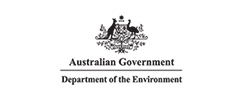Maritime cultural heritage in Australia and abroad is under increasing threat from onshore, coastal and offshore development activities, as well as the ravages of climate change and extreme weather events which lead to scouring and sudden exposure of buried sites. Furthermore, sudden and catastrophic collapses of shipwrecks in Australian waters have been reported over the last 10 years. This project will develop a model for state and federal government collaborative research and policy development, and seeks to create a national approach to sustainable management of maritime cultural heritage.
One of the main aims of the project is to develop a protocol for the rapid excavation, detailed recording and subsequent in-situ preservation of significant shipwrecks. This work is critical for the future development of national, and possibly international, policy and technical guidelines for site managers of historic wrecks.
The overarching theoretical focus will be on shipwreck site formation models and colonial shipbuilding and the project brings together the disciplines of behavioural archaeology, maritime archaeology, conservation sciences and maritime object conservation.
The project will study colonial shipbuilding by conducting a detailed excavation program with GIS-enhanced logging of wreck structures, fittings and objects, recording the degree to which domestic versus traditional (namely British) ship building techniques were used, study how shipbuilding methods were designed to suit new environments and the use of different timbers, document the presence and nature of durable organic materials like wooden pulleys, leather and rope, and analyse other materials, such as metal fastenings and fittings, to inform on innovation in building practice. AHSPP also aims to make significant advances on current international reburial and in-situ conservation approaches in near coastal zones where impacts are highest and develop intervention protocols in order to successfully stabilise and conserve shipwreck sites. The project will develop a reburial methodology that will subject all excavated artefacts and objects to a sophisticated, forensic documentation prior to their reburial. This has not previously been achieved in maritime archaeology.
The excavation, reburial and in-situ preservation study of the Clarence (1850) will:
* Make significant contributions to understandings of site formation models, colonial shipbuilding and specific lifeways and assemblages associated with a colonial trader;
* Make significant advances on current international reburial and in-situ conservation approaches in near shore coastal zones where impacts are highest;
*Add rapid capture 3-dimensional imaging of significant artefacts and objects;
*Perform and improve very detailed conservation monitoring procedures following the reburial of shipwreck elements and objects on the site in stabilised conditions;
* Create a virtual representation of the site that will enable it to be re-interrogated over time with many different research and conservation questions and issues;
* Develop in-situ preservation protocols to successfully stabilise and preserve the site in the long-term; and
* Produce a sustainable, cost-effective and strategic solution to a national shipwreck management crisis whereby wooden (organic) shipwreck elements are at risk.

















